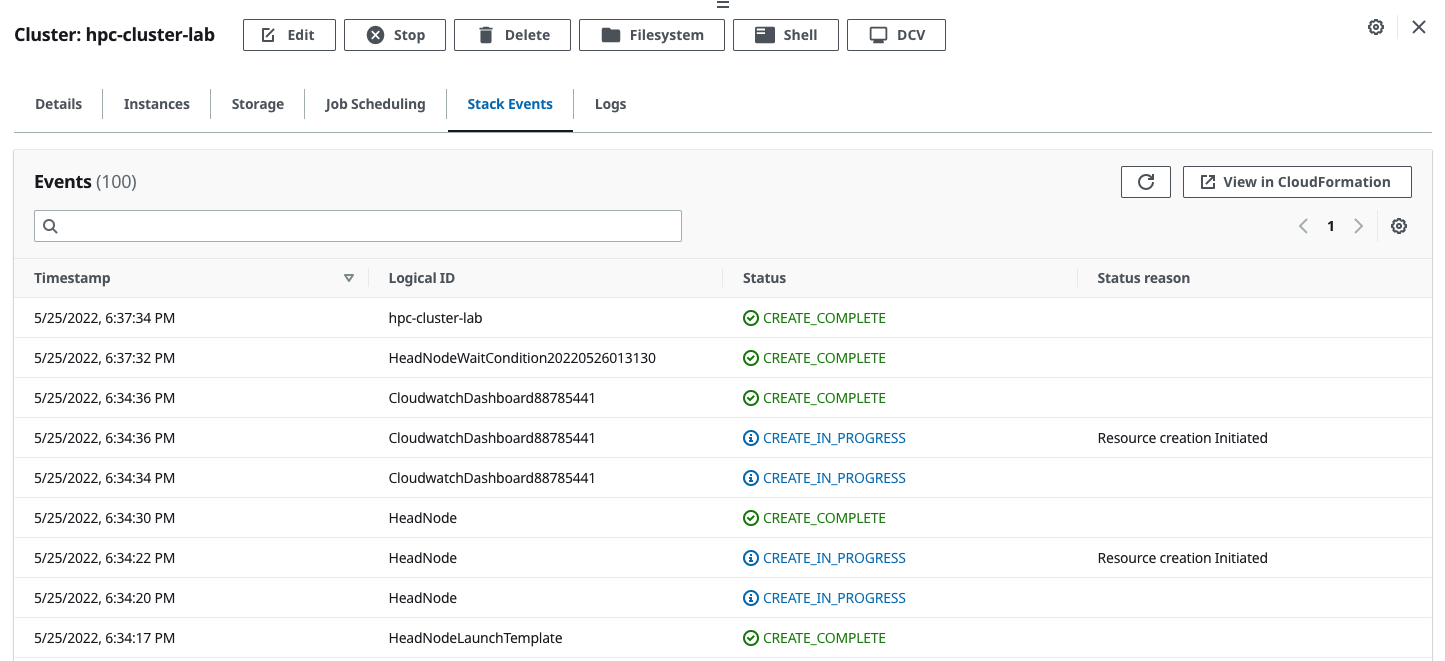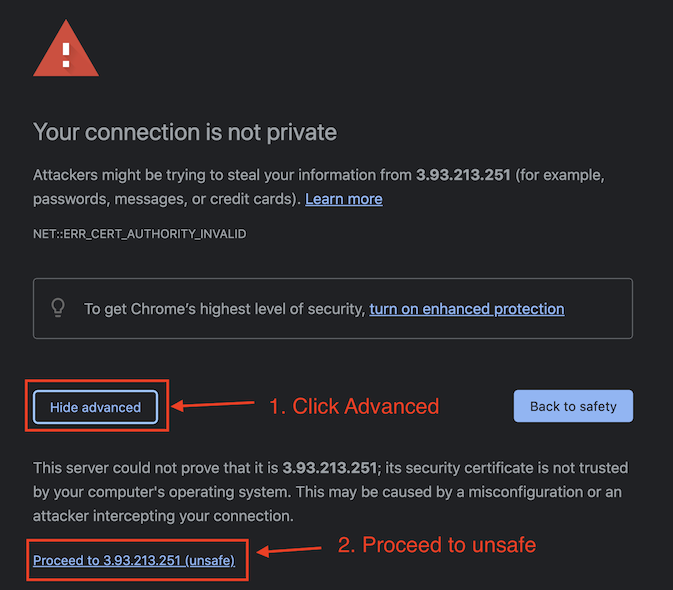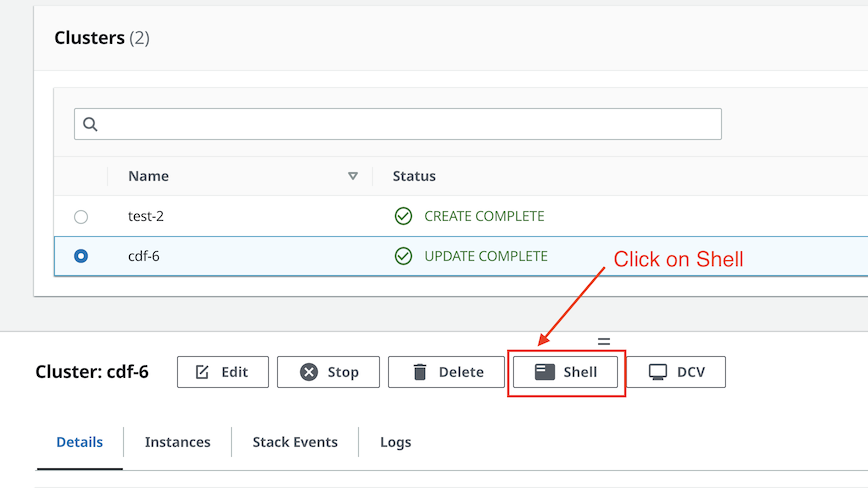h. Connect to the Cluster
Once you are connected to Pcluster Manager, you can see the created cluster, depending on timing this cluster might be in CREATE_IN_PROGRESS or CREATE_COMPLETE state.
What’s Happening in the Background
When the pcluster create-cluster command is executed, AWS ParallelCluster generates an AWS CloudFormation template to generate an infrastructure in AWS. If you want to see AWS CloudFormation generating the infrastructure, you can view the Stack Events tab to see cluster creation events in real time:

Once the cluster goes into CREATE COMPLETE, you can connect to the head node via DCV.
DCV is a full graphical remote desktop that allows you to run GUI applications on the head node. It doesn’t require AWS account access but does require you to be able to connect to the head node on port 8443.
DCV Connect
- Click on the DCV Button to connect:

- As a one-time step since DCV uses self-signed certificates you’ll need to click on Advanced > Proceed to Unsafe:

- Next to launch a terminal (where the rest of the lab will run) we’ll click Activities > Terminal:

Optional (SSM Connect)
You can skip this step or you can read below if you are curious about the other ways to connect your cluster.
In addition to DCV, you can connect to your cluster via SSH using SSM.
SSM Connect It doesn’t require any ports to be open on the head node, however it does require you to authenticate with the AWS account the instance it running in.
- Click on the Shell Button to connect:

You’ll need to be authenticated to the AWS account that instance is running in and have permission to launch a SSM session. Once you’re connected you’ll have access to a terminal on the head node:
